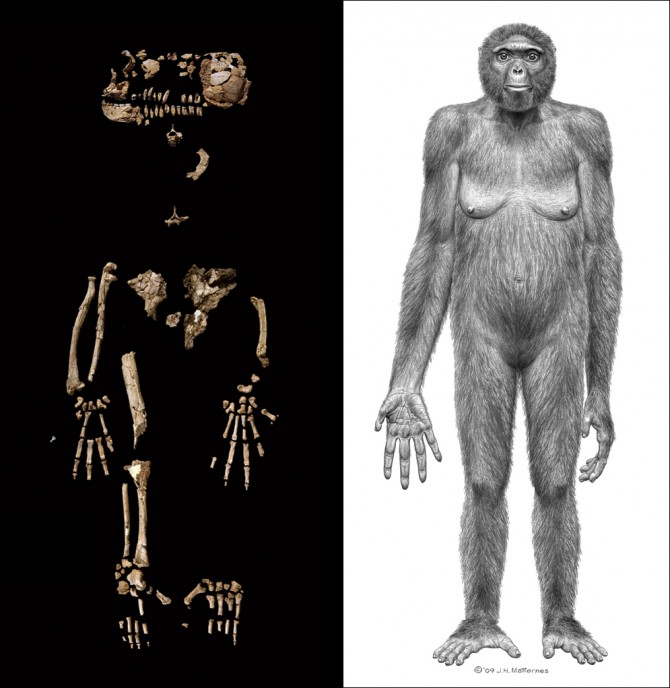

On Monday, President Obama met an ancestor of an altogether different kind: “Lucy,” the 3.2 million-year-old partial skeleton of a hominid discovered in Ethiopia. July 26, 2015 Lucy is the common name of AL 288-1, several hundred pieces of bone fossils representing 40 percent of the skeleton of a female of the hominin species Australopithecus afarensis. In Ethiopia, the assembly is also known as Dinkinesh, which means "you are marvelous" in the Amharic language. Lucy was discovered in 1974 in Africa, near the village Hadar in the Awash Valley of the Afar Triangle in Ethiopia, by paleoanthropologist Donald Johanson of the Cleveland Museum of Natural History.[1][2] The Lucy specimen is an early australopithecine and is dated to about 3.2 million years ago. 
Ardi is the designation of the fossilized skeletal remains of an Ardipithecus ramidus, believed to be an early human-like female anthropoid 4.4 million years old. It is the most complete early hominid specimen, with most of the skull, teeth, pelvis, hands and feet,[1] more complete than the previously known Australopithecus afarensis specimen called "Lucy." The Ardi skeleton was discovered at Aramis in the arid badlands near the Awash River in Ethiopia in 1994 by a college student, Yohannes Haile-Selassie, when he uncovered a partial piece of a hand bone. Earliest human migrations and expansions of archaic and modern humans across continents began 2 million years ago with the migration out of Africa of Homo erectus. This was followed by the migrations of other pre-modern humans including H. heidelbergensis, the likely ancestor of both anatomically modern humans and Neanderthals. Finally, the recent African origin paradigm suggests that Homo sapiens migrated out of Africa around 100,000 years ago, spread across Asia approximately 60,000 years ago, and subsequently populated other continents and islands. 关于人类多起源的说法在Lucy和Ardi发现后,基本没什么市场了。 赞同。 
|
